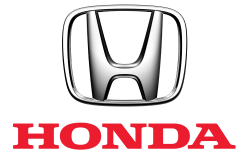The Europe automotive lightweight car market size was USD 86.55 Billion in 2022 and is likely to reach USD 187.98 Billion by 2031, expanding at a CAGR of 9% during 2023–2031. The growth of the market is attributed to increasing usage of high strength steel (AHSS) for mass vehicle reduction.
Automobile lightweight materials have a high strength-to-weight ratio, excellent corrosion resistance, and significant design freedom, making them ideal for use in the manufacturing of automotive systems. Automotive lightweight car makers use plastics, polymer composites, steel, magnesium, and aluminium to meet the evolving requirements of the industry. Mix of alloys and composites, with non-ferrous metals with low density are utilised in the industry. Metal alloys are easy to forge and find useful in numerous applications.

Europe Automotive Lightweight Car Market Trends, Drivers, Restraints, and Opportunities
-
Increasing focus on fuel efficiency and stringent regulations by regulatory authorities is anticipated to boost the market growth.
-
Rising fuel economy standards is projected to push the market expansion in the coming years.
-
High usage of carbon fiber composites by automobile manufacturers is expected to drive the market growth in the coming years.
-
Rising application of lightweight car materials in the alternative fuel vehicle industry is expected to spur the market growth during the forecast period.
-
The COVID-19 outbreak led to the closedown of the manufacturing facilities, which in turn, disrupted the automotive industry. However, the relaxation in restrictions is expected to help the market reach pre-COVID level soon.
-
High demand for weight reduction to improve performance and safety of cars is expected to propel the market growth during the forecast period.
-
Increasing R&D investment to reduce the cost of materials is expected to create opportunities for the market players.
Scope of Europe Automotive Lightweight Car Market Report
The report on the Europe automotive lightweight car market includes an assessment of the market, trends, segments, and regional markets. Overview and dynamics have also been included in the report.
|
Attributes
|
Details
|
|
Report Title
|
Automotive Lightweight Car Market -Europe Industry Analysis, Growth, Share, Size, Trends, and Forecast
|
|
Base Year
|
2022
|
|
Historic Data
|
2016–2021
|
|
Forecast Period
|
2023–2031
|
|
Segmentation
|
Material Types (Metals, Composites, and Plastics), Manufacturing Processes (Extrusion, Stamping, Forging, Casting, and Others), and Applications (Structural, Powertrain, Interior, and Exterior)
|
|
Geographical Scope
|
Germany, the UK, France, Italy, Spain, and Rest of Europe
|
|
Report Coverage
|
Company Share, Market Analysis and Size, Competitive Landscape, Growth Factors, and Trends, and Revenue Forecast
|
|
Key Players Covered in the Report
|
ThyssenKrupp AG, Ssab Steel, POSCO, Arcelor Mittal, and AK Steel Holding Corporation
|
Europe Automotive Lightweight Car Market Segment Insights
Metals segment to account for a major market share
Based on material types, the market is divided into metals, composites, and plastics. The metals segment is expected to account for a key market share during the forecast period. Advanced High Strength Steel (AHSS) has become an essential material for mass vehicle reduction. The body structure, panels, doors, and trunk closures are all made up of steel, which provides energy absorption and excellent strength in the event of a collision.
Casting segment is expected to register at a high CAGR
In terms of manufacturing processes, the market is segregated into extrusion, stamping, forging, casting, and others. The casting segment is expected to grow at a rapid pace in the coming years. The casting method has several advantages, including operational flexibility, lower cost per part, and high production capacity. The procedure is quite adaptable for mass production, allowing for the rapid development of a large number of castings.
Powertrain segment is anticipated to expand at a substantial CAGR
In terms of applications, the market is classified as structural, powertrain, interior, and exterior. The powertrain segment is anticipated to register a substantial CAGR during the forecast period. Powertrain accounts for more than 27% of the vehicle weight. Hence, a huge potential opportunity to deploy lightweight material in the system is driving the segment growth.

Germany to account for a significant market share
Based on geography, the market is segregated into Germany, the UK, France, Italy, Spain, and Rest of Europe. Germany is anticipated to dominate the market owing to presence of major auto manufacturers and adoption of advanced materials in the cars. Moreover, the rapid growth of the electric vehicle (EV) industry is propelling the market growth in the country.
Segments
The Europe Automotive Lightweight Car market has been segmented on the basis of
Material types
- Metals
- Composites
- Plastics
Manufacturing Processes
- Extrusion
- Stamping
- Forging
- Casting
- Others
Applications
- Structural
- Powertrain
- Interior
- Exterior
Geography
- Germany
- The UK
- France
- Italy
- Spain
- Rest of Europe
Key Players
- ThyssenKrupp AG
- Ssab Steel
- POSCO
- Arcelor Mittal
- AK Steel Holding Corporation
Competitive Landscape
Key players competing in the market include ThyssenKrupp AG, Ssab Steel, POSCO, Arcelor Mittal, and AK Steel Holding Corporation.

























